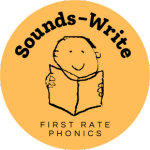The Sounds-Write Progress Checks are carefully designed to align closely with your daily phonics instruction. Far from being just another test, these checks are devised to feel like a natural extension of your Sounds-Write lessons, putting teaching and meaningful data first. Let’s dive into how you can effectively administer and make the most of these checks in your classroom practice.
Why progress checks matter
Progress Checks serve a dual purpose: they identify what students have successfully learned and help you recognise those who may not be progressing as expected.
These tools complement your ongoing formative assessment by offering a structured and consistent way to track student understanding over time.
Used well, they support data-informed decisions that strengthen your teaching and improve outcomes for all learners.
Access the Progress Checks
Progress checks and guidance are available for all Sounds-Write practitioners. Head to the ‘Professional Development’ section on the Practitioners’ Portal.
When and which check to use
Frequency: For most school settings, aim to administer progress checks every 6 to 8 weeks. This regular rhythm allows you to track progress consistently.
For intervention groups: If you’re working with students receiving interventions, align your checks with their specific intervention unit. Use your professional judgment to decide when to test, ensuring testing fits with your curriculum pacing.
Selecting the right check: It’s straightforward! Just identify the last completed Sounds-Write unit your students have finished. For example, if they’ve just completed Unit 6, you’ll administer Progress Check 4. Keep in mind that no checks are provided before Unit 3.
Administering the checks: Initial Code
At the Initial Code level, each progress check includes two key components: word reading and word dictation.
Word reading (one-to-one)
This section is best delivered one-to-one by an experienced practitioner. It’s an opportunity for focused assessment and immediate support.
- Setting: Conduct this outside of your regular phonics sessions to minimize distractions.
- Process: Use the provided word list, revealing one word at a time to the student.
- Support: Crucially, if a student struggles, use the ‘Teaching Through Errors’ scripts. This ensures that even during assessment, you’re reinforcing learning.
- Recording: Make sure you record any difficulties on the individual record form. This detailed information will be invaluable for your analysis.
Word dictation (whole-class)
Word dictation is designed as a whole-class activity and should be integrated into the Review part of a Sounds-Write session.
- Delivery: Dictate words clearly using the script provided.
- Student engagement: If students are using whiteboards, encourage them to “chin it” when they’re ready to show they’ve finished. If they’re using notebooks or the Student dictation form, collect them after the activity.
- Immediate action: The beauty of this component is that you can immediately analyze performance to adjust your future planning. Look for common errors to re-teach and identify students who might need more intensive support.
- Recording: Record class results using the provided spreadsheets for a clear overview of group performance.
Administering the checks: Extended Code
Once you reach the Extended Code level of the Scope and Sequence, an additional measure is introduced to the Progress Checks: sentence dictation.
Sentence dictation (whole-class)
This whole-class activity also takes place during the Review part of your Sounds-Write session, following lesson script 4a.
- Student work: Students should write their dictated sentences in their notebooks or on the Student dictation form provided.
- Review: Collect these at the end of the progress check to review their performance.
Analysing your data and adjusting instruction
The real power of these checks comes in the analysis.
- Individual performance: After administering the checks, take the time to check and analyze the performance of each student. Pay close attention to where errors occurred.
- Inform your planning: Use this rich information to adjust your planning for subsequent sessions. If you notice common errors or misconceptions across the class, plan to re-teach those concepts or specific code knowledge or include additional practice.
- Identify support needs: Most importantly, this analysis will help you identify any students who require more intensive support. This allows you to target interventions precisely and ensure every student is on track.
By thoughtfully integrating Sounds-Write Progress Checks into your teaching, you’re not just assessing; you’re actively informing your instruction and ensuring that every student has the best chance to succeed.
Join Us
Empower your teaching with the Sounds-Write program and gain access to world-class training and ready-to-use resources that make literacy instruction clear, confident, and effective.
You may also like
The Phonics Screening Check 2025 (England): Our Analysis
In this post, Sounds-Write's Founder and CEO John Walker examines the structure of the Phonics Screening Check 2025, highlights patterns and potential points of confusion, and offers guidance on how teachers can use this insight to better support early readers. You...
Dyslexia: Diagnosis, Debate, and What Really Matters for Teachers
This blog post was inspired by Professor Joe Elliott’s keynote: “Rethinking Dyslexia: From Diagnostic Labels to Evidence-Based Reading Support” at the Sounds-Write Symposium 2025. His thought-provoking presentation challenged many of the assumptions we often make...
Announcing Our New Annual Membership: Flexible, Affordable Phonics Training for Your Whole School
We’re excited to share a major development at Sounds-Write—our brand-new annual membership, launching in September 2025. The membership will be available in the UK and the rest of Europe, and to any international schools following an English curriculum. “The...







